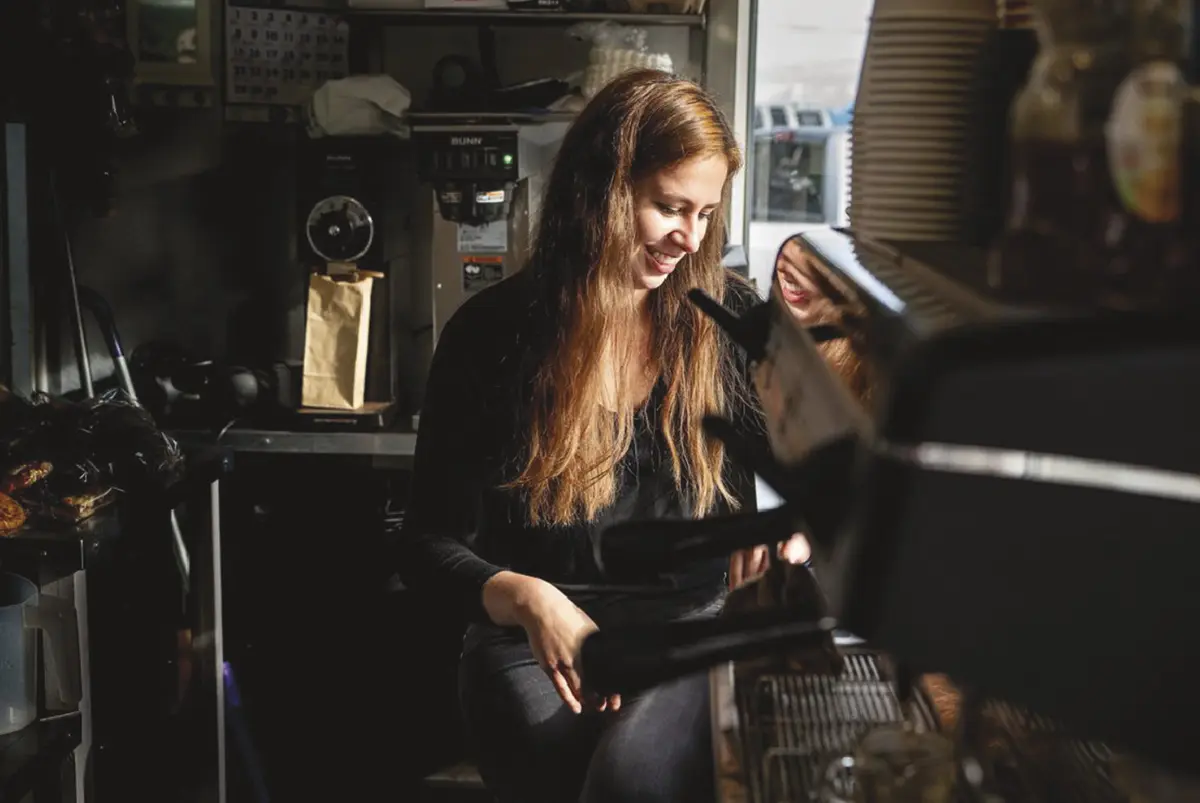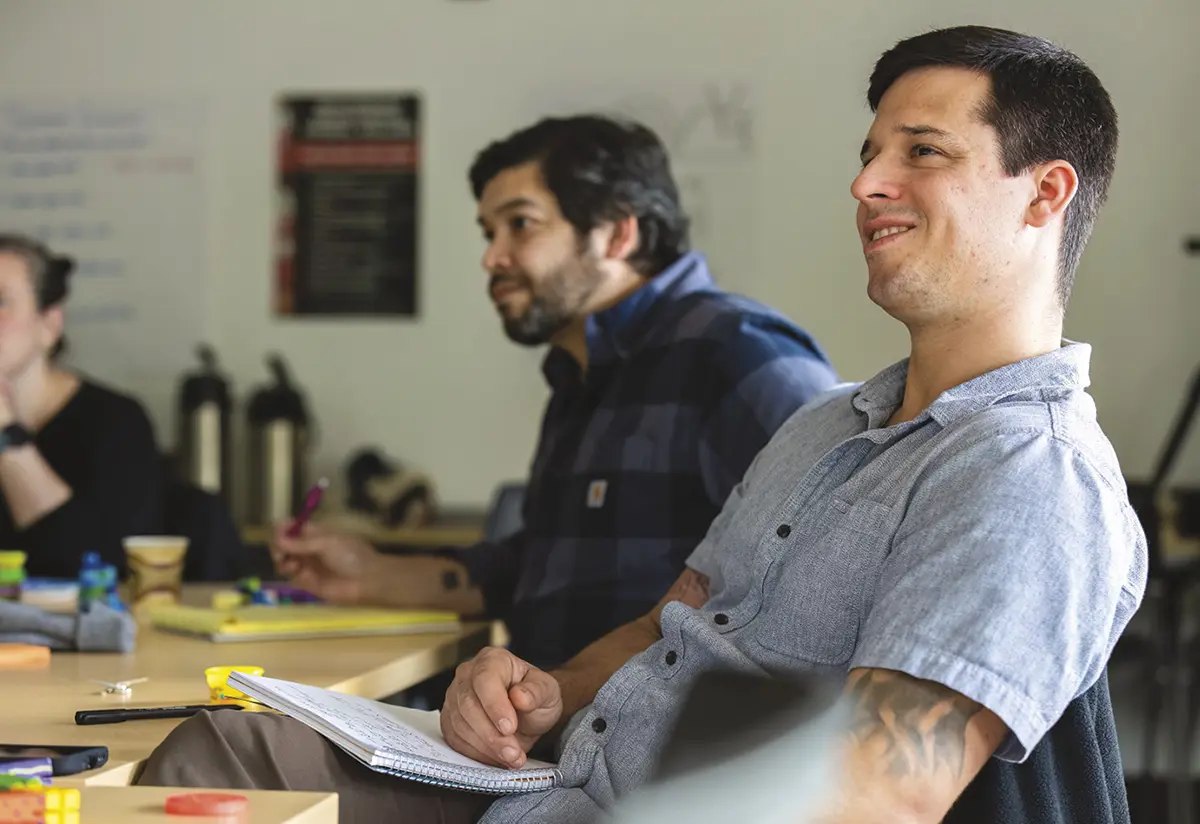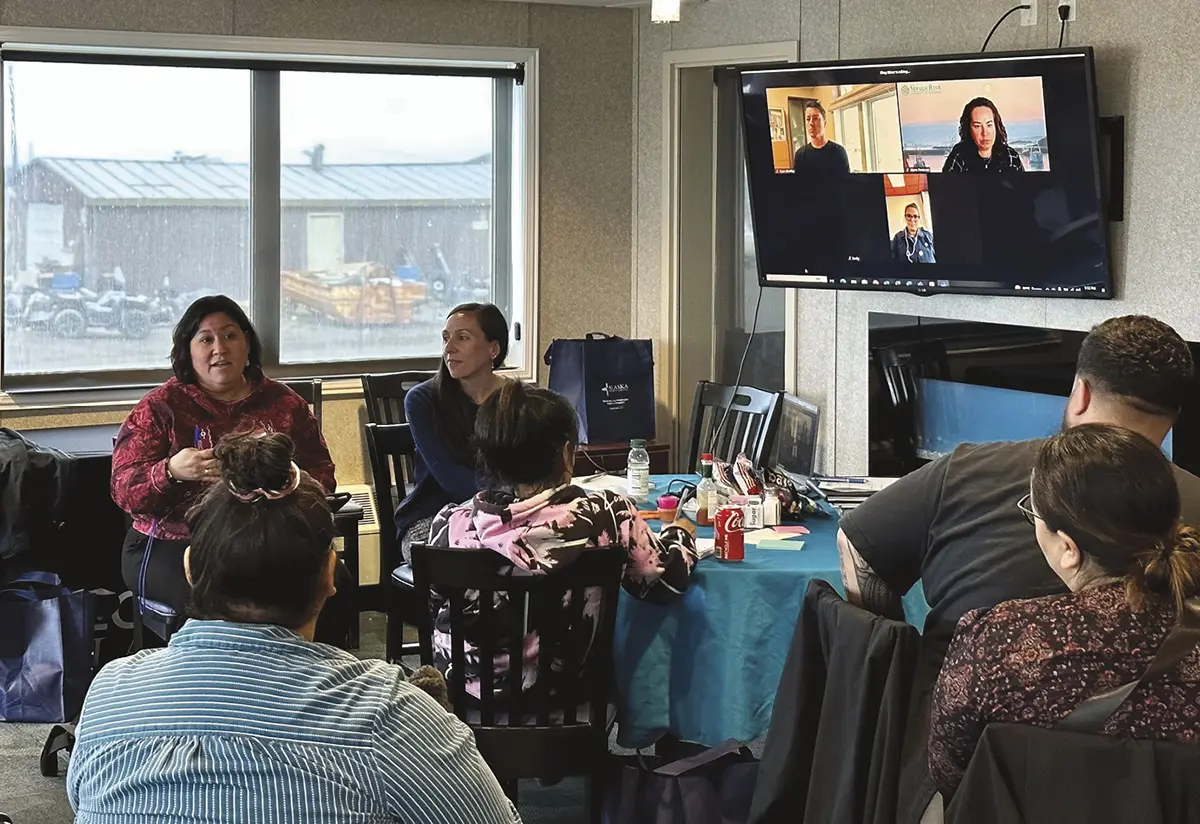very business needs a business plan,” says Jon Bittner, executive director of the Alaska Small Business Development Center (SBDC) at UAA. “Do you need a sixty-page, high-gloss plan? Probably not; not at first, anyway. But it’s a really crucial first step for any business.”
That first step is more than a blueprint for the final form of a business, according to Ashley Snookes, program director at Spruce Root. “Business plans can be seen as a final destination, [but] when we look at a plan that way, it breaks. It doesn’t last for the many things that happen to a business,” she says.
Spruce Root is a nonprofit community development financial institution (CDFI) serving Southeast. In addition to its lending, networking, and philanthropic functions, Spruce Root’s Path to Prosperity program includes one-on-one business coaching, online training, and multi-day workshops.
The flagship feature, though, is its business plan competition. Twice each year, the nine-week “Business and Balance” course leads a cohort through compiling a plan. At the end, judges award the best three up to $20,000 apiece.
Bittner notes that many Alaska brands owe their success to a solid plan—and to the financial boost from a competition prize. “That’s where they got their start, most of the ones that seem to have the best marketing presence. And I don’t think that’s a coincidence, honestly,” he says. “I think that there is definitely a direct tie to entrepreneurs that understand the opportunity that these competitions represent and their ability to leverage that later on.”
But they can help. Most lenders require a well-vetted business plan, Bittner says, so participating in a contest looks good on a loan application.
Cash prizes are another common incentive. “Some of them have money involved,” Bittner says. “Sometimes you get access to free resources, marketing, things like that. Some of them, it’s the exposure: you get a lot of promotion, not even if you win but if you’re in the top three. You also get access to the network of judges, sponsors, and other participants.”
More than once, Bittner has seen competitors become collaborators by cross-pollinating their ideas. They also sharpen each other, motivating greater effort. “Sometimes people need that competitive edge to do the homework,” Bittner says. “This gives you a structure, a timeline, and maybe some upside on the back end.”
Snookes sees competitions the same way. “They’re a structured methodology for fleshing out your ideas or bringing them into action,” she says. “A lot of folks really like entering into something that gives them a hard deadline and a goal that they’re going to accomplish—and that extra carrot at the end, sometimes, of an award or something that they’re reaching for.”
Furthermore, contests bring new talent into contact with experts. “Participants are learning core elements of running a business,” Snookes says. “The ‘lightbulb’ moments had by our participants—from startups to seasoned entrepreneurs—tells us that these trainings make a difference in how they run their businesses.”
Connor Meyer

Spruce Root’s latest cohort began in September. It targets Southeast residents and emphasizes ideas that have positive environmental, social, and economic impact. SBDC’s rural program director, Ian Grant, assists Spruce Root, but the center itself does not host any competitions.
UAA’s Business Enterprise Institute, however, runs the Upstart Alpha accelerator through its Center for Economic Development (CED). The course starts in October with a two-day “Find Your Customer” virtual workshop and continues through December 15 with nine more sessions on market validation, branding, and financing. Participants are eligible for a cash stipend of up to $2,000.
Finalists training through North Slope Marketplace have until November 3 to submit business plans. That competition, operated by McKinley Alaska Growth Capital (MAGC) and open to Arctic Slope Regional Corporation shareholders, will announce winning grantees in February. Since 2009, it has awarded more than $1 million to fifty businesses.
UAA’s College of Business and Public Policy has a competition tied to a course that begins in November. Prizes ranging from $1,000 to $8,000 are distributed in April at the “Perfect Pitch” event.
April is also when UAF hosts its Arctic Innovation Contest. It offers a $15,000 grand prize in the main division, and prizes are also given to teens and younger innovators. Complete plans are not a requirement; the contest is open to products or ideas.
Next May, the 49th State Angel Fund will again host its Alaska Angel Conference. The statewide program deals with the other side of the entrepreneurial equation: guiding novice investors through the process of selecting companies. Applicants compete for a $100,000 investment. The conference not only boosts new businesses but increases the number of investors in the startup ecosystem.
On its alaskastartups.com web page, UAA CED lists many more programs, albeit without the competition angle. For instance, the seven-week gBETA program run by gener8or, a national accelerator, is not accepting applicants at this time, but it is hosting a nationwide conference on manufacturing in Indianapolis this month.
Anchorage Community Land Trust operates its Set Up Shop program for growing businesses in the Mountain View, Fairview, Muldoon, and Spenard neighborhoods. Functionally similar to other training courses, it simply drops the competition component.
With cohorts capped at ten, twenty, or at most fifty participants, the state’s entrepreneur training pipeline struggles to meet demand, according to Bittner. Having many small programs, though, lets each of them occupy a narrow niche.
Spruce Root’s focus, for instance, is a holistic approach. “We have a lot of conversations around well-being, balance, and how they manage running the business with the rest of the expectations that they have in their lives,” Snookes explains.
The diversity of programs also opens the field to a wider spectrum of entrants.
UAF’s Arctic Innovation Contest awarded cash prizes to AiryCherry, a portable outdoor air-purification system; Grater Than Ice, a spinning ice scraper; and The Animal Alert, an app for warning about dangerous wildlife nearby. That last idea was from the pre-teen division.
Bittner judges the adult division, but he loves to see kids’ inventions. “Those kids come up with stuff where I’m, ‘Why have I not thought of it that way before?’ There’s been so many business ideas that I wish I’d thought of first,” he says, recalling one intriguing twist on frozen yogurt.
New uses for Alaska resources catch Snookes’ attention. “It’s super exciting to see entrepreneurs that are leaning into the mariculture space. We know that there’s a lot of federal funding that’s come to Southeast Alaska that’s interested in growing this nascent industry,” she says.
With so many different industries represented, how do judges weigh plans against each other? Bittner explains, “There are certain fundamental things that basically every business plan needs. Financials are financials, no matter what industry sector you’re in. Margins may change, operating costs, all that stuff—but at the end of the day, the money you bring in has to exceed the money you spend, or it’s not a business. It’s a hobby.”
Mary Miner, vice president of community development at MAGC, says judges for North Slope Marketplace look for certain criteria. “We have a scoring rubric that we share with the entrepreneurs. They see the business plan template, and it links to the scoring section in our rubric,” Miner says. “Really, we’re looking for comprehensive plans.”
The best plans thoroughly and scrupulously analyze all aspects of the business.
Spruce Root

Bittner says one common mistake is not choosing a market segment. “You think your product is the greatest thing that’s ever been invented; you want everyone to buy it. ‘My market segment is the whole wide world!’ It’s very difficult to market to the whole wide world,” he says.
Therefore, client discovery is very important, a point Snookes agrees with. “It’s really tempting for entrepreneurs to, for example, discuss their competition in the business plan and just want to wow judges or whatever investor is reading it, to say, ‘Oh my gosh! This is the best!’ But as consumers, we all know that there’s a huge variety of similar products and services,” she says.
To be useful, plans must assess shortfalls and risks as well as advantages. Snookes says, “The best business plans I’ve read are the ones that get really honest about the challenges that they foresee as well as the opportunities.”
A long-term view is also important at the outset, according to Bittner. “A really, truly good business plan isn’t just structured for the next year or next three years; it’s structured for the exit,” he says. “Eventually, you’re going to leave the business… You can do a lot of things on the front end that can make that a very difficult, horrible process or it can make it a wonderful, easier process.”
Winners of Spruce Root’s Path to Prosperity must also “do good,” a principle that North Slope Marketplace has incorporated. “We have the business fundamentals, where we look at the opportunity and the value proposition, the feasibility of implementation, the financial plan, the team, and we look at the social impact of the business,” Miner explains.
Borrowing from Path to Prosperity, Miner says North Slope Marketplace weighs plans against a “triple bottom line” standard: people, planet, and profit.
More than 250 business plans have trodden the Path to Prosperity, advancing 124 finalists. Altogether, Spruce Root has awarded $750,000 to twenty-one startups through the competition (a small fraction of the 800 entrepreneurs supported through its technical assistance programs).
Path to Prosperity earned Spruce Root an award for itself. In 2015, the International Economic Development Council gave the organization a Silver award for excellence. Snookes credits its client support, programming developed with the Sustainable Southeast Partnership, and the underlying holistic approach.
Spruce Root

While Spruce Root focuses on Southeast, it has partners in other regions, North Slope Marketplace being one. Snookes recalls a recent field trip with the MAGC team. “It was really humbling to be in Utqiaġvik,” she says, “and really seeing how little the Spruce Root team knew about that area. But because we had that partnership with them, they were able to really bring in the community and ground us in cultural practices that we don’t know without a partner being there.”
Responsiveness to local conditions forces each program to evolve. The nine-week course that Spruce Root is conducting this fall, for instance, used to be a three-day intensive boot camp resulting in two $25,000 prizes. Last spring, Spruce Root revised the training schedule while lowering the top prize to $20,000 and adding a third winner.
Spruce Root

McKinley Alaska Growth Capital

Partnerships, she adds, are the key to Spruce Root’s work. Indeed, Bittner expects more partnerships to flourish soon. “The next three to five years, we’re going to see an explosion of other resources, mainly driven by the State Small Business Credit Initiative [launched last October]. There’s multiple technical assistance grants that are coming out, the various federal spending bills… All sorts of things like that,” he says.
Bittner has observed that entrepreneurship programs outside of Alaska tend to compete for resources, but that’s less the case within Alaska. The competition is reserved for business plans themselves.